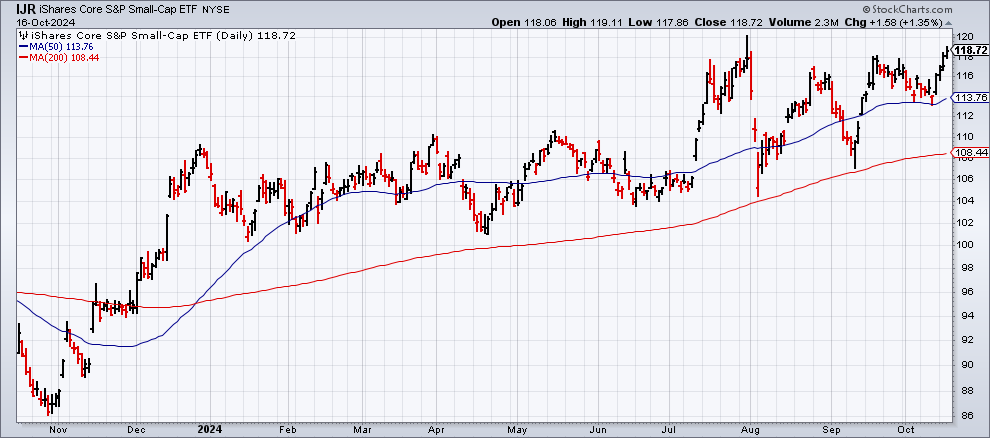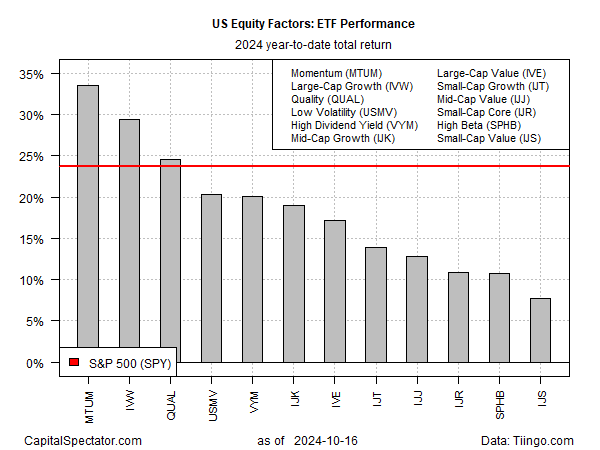The rally in recent days of the Russell 2000 Index, a widely followed benchmark of small-cap shares, has revived hope anew that this slice of the equity market is finally set to recover after a long stretch of underperformance. But we’ve been here before, multiple times in recent years. Is this time different? Maybe, but the evidence is still a bit thin.
Yet after several days of rising, the latest strength in the Russell 2000 has triggered breathless headlines that a turning point has arrived. A “Major Technical Breakout”, advises one source. Another predicts “Small-Cap Stocks Could Rally in 2025” while CNBC reports that “Small-cap stocks are showing signs of life.”
If you think you’ve heard this before, you’re right. In March, for instance, we reported: “Hope Springs Eternal, Again, For Small-Cap Equities.” Since then, however, small caps have continued to underperform the broad equity market.
Despite the new round of optimism, the burden of proof is still firmly on small caps to display relative strength. Year to date comparisons, however, still look ugly. The iShares Core S&P Small-Cap ETF (NYSE:IJR) is still trailing the broad US stock market (SPY) by a wide margin for year-to-date performance: 10.9% for IJR vs. 23.7% for SPY.
Over the past month, small caps (IJR) have closed the gap rather dramatically and are now neck and neck with SPY, each posting near-4% rallies.
It’s encouraging that IJR’s technical profile is looking solid lately. The upside trend for the ETF appears strong enough to keep the party going.
Given the recent strength, the case for a contrarian bet on small caps looks more compelling these days. Comparing IJR against a wide set of factor ETFs for year-to-date results reminds that small caps have underperformed most slices of the equity market. Assuming a reversion-to-the mean effect suggests that a degree of normalization may be brewing in favor of small firms.

“Small caps have been stuck in a consolidation range over the last few months as investors questioned the likelihood of a soft-landing scenario and the path of monetary policy,” says Adam Turnquist, chief technical strategist at LPL Financial. “Small caps tend to be more sensitive to economic conditions and interest rates versus their larger cap peers.”
The implication: expectations that the Federal Reserve will continue to lower interest rates at a time when the US economy still looks poised to expand may fuel an extended small-cap rally. Hope, it seems, is reviving once more for these stocks. For portfolios that are underweight small caps, or with a zero weighting, one can argue that the timing is ripe for making a calculated risk that the optimists are right this time.
